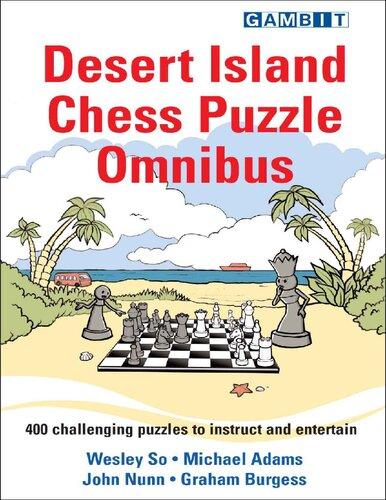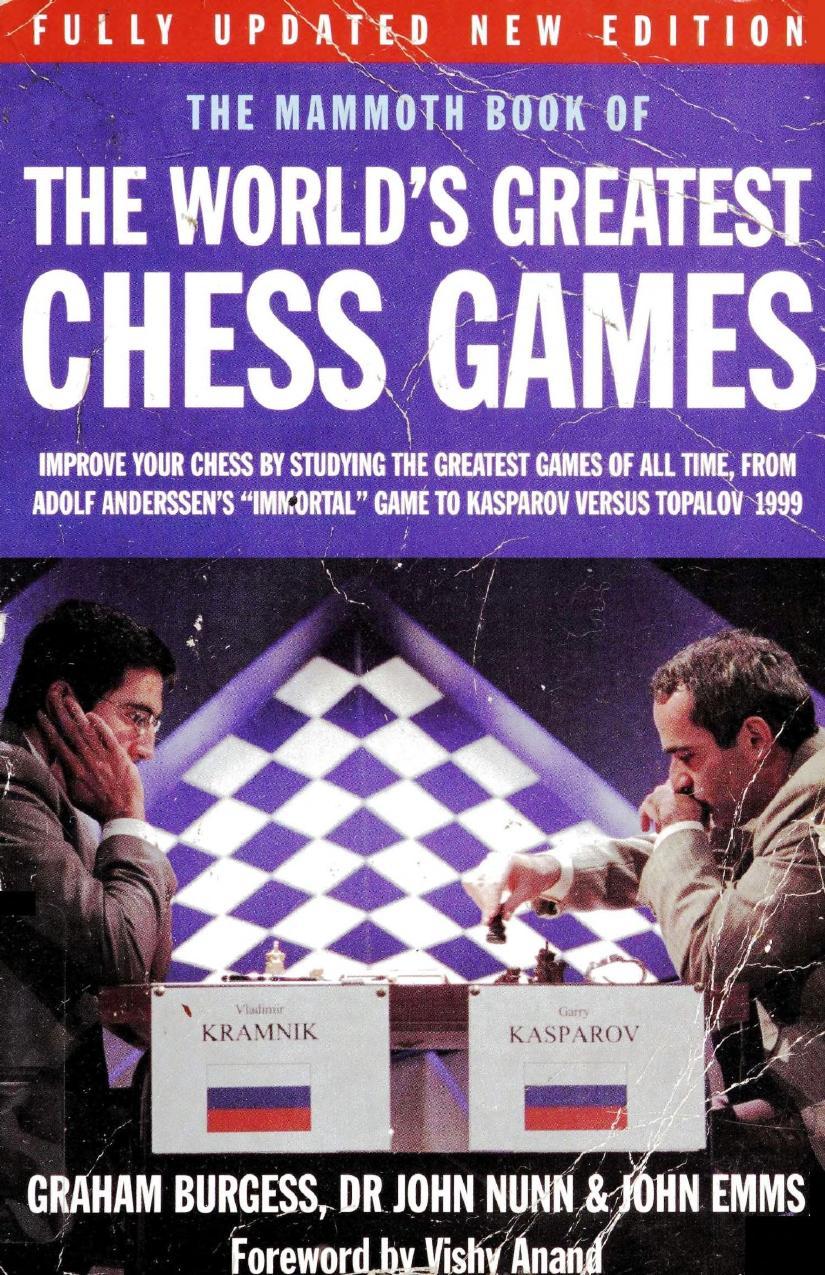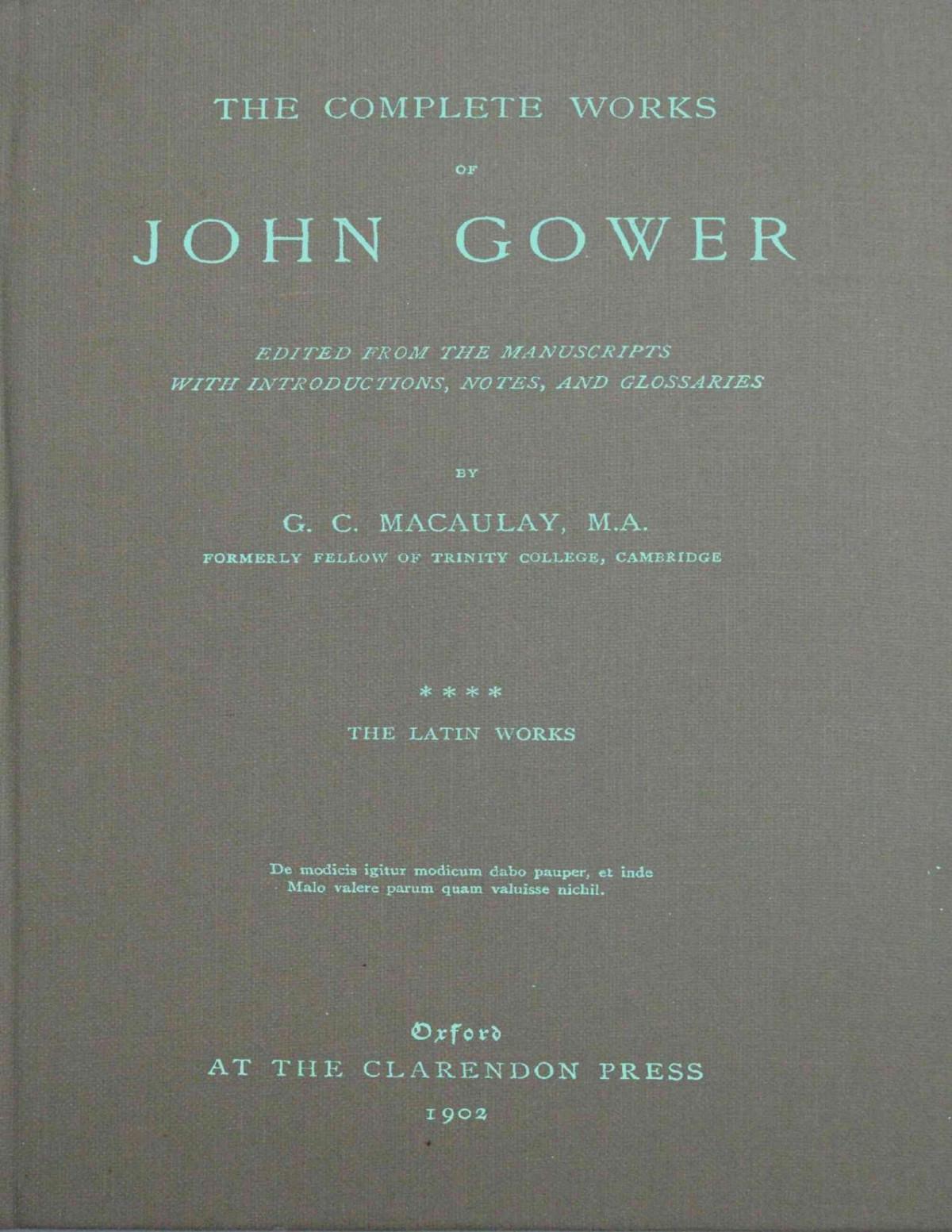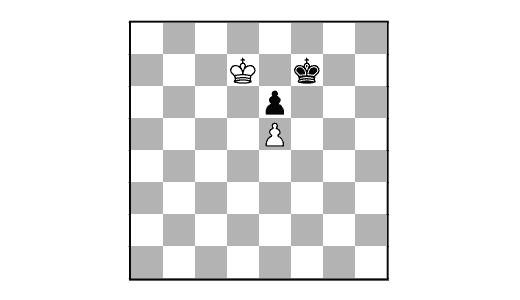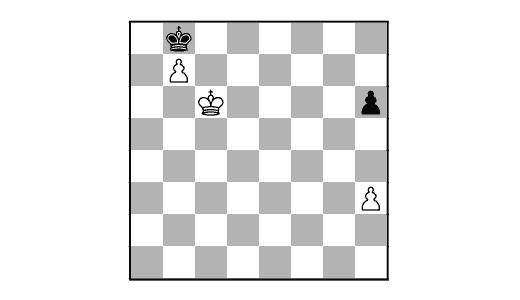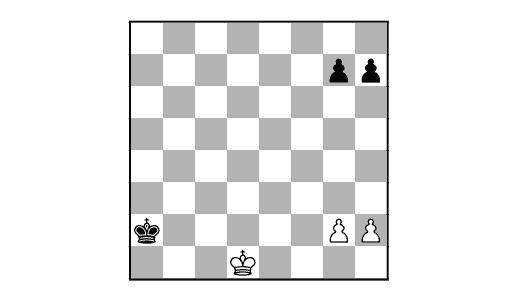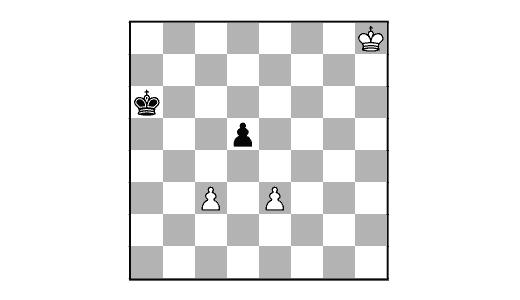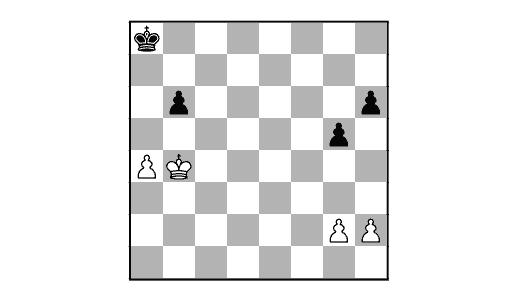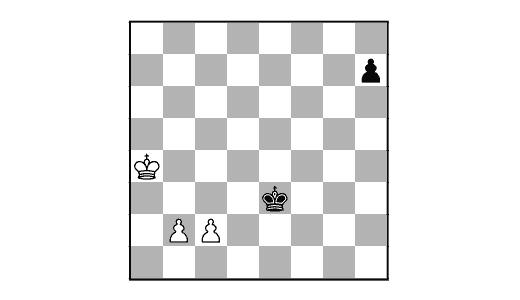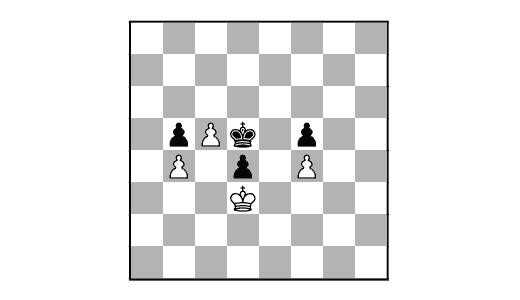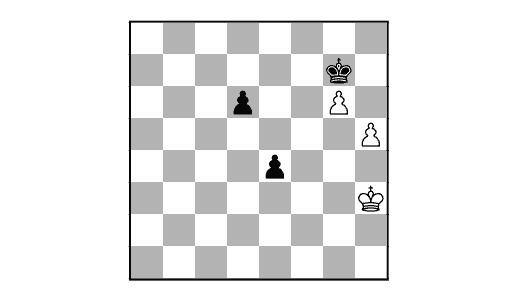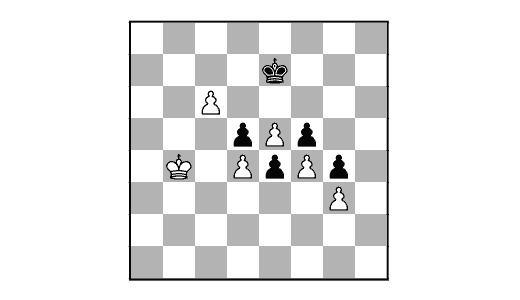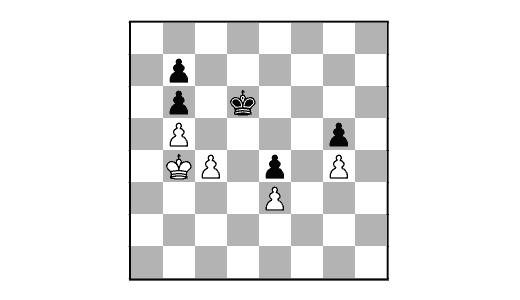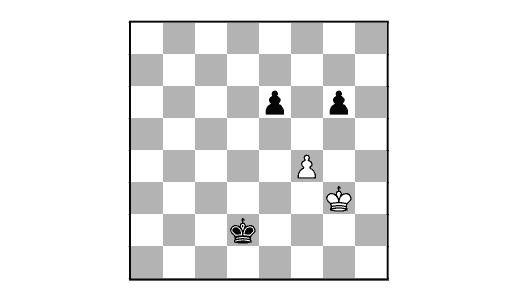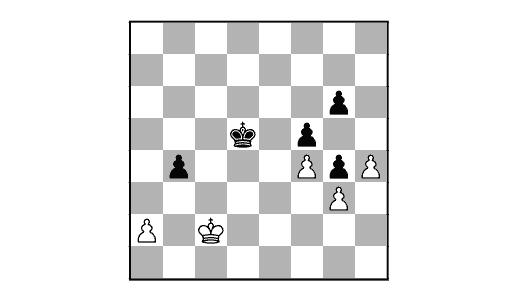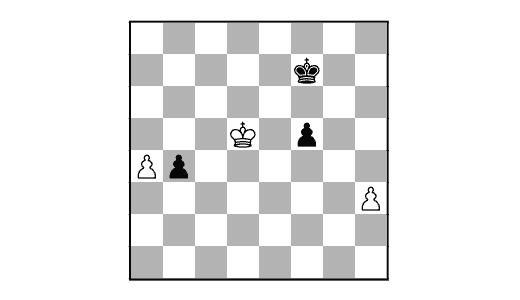The Chess Endgame Exercise Book - John Nunn John Nunn Visit to download the full and correct content document: https://ebookmass.com/product/the-chess-endgame-exercise-book-john-nunn-john-n unn/
More products digital (pdf, epub, mobi) instant download maybe you interests ...
Desert Island Chess Puzzle Omnibus, Wesley So, Michael Adams & John Nunn 2021-TLS Wesley So & Michael Adams & John Nunn & Graham Burgess
https://ebookmass.com/product/desert-island-chess-puzzle-omnibuswesley-so-michael-adams-john-nunn-2021-tls-wesley-so-michaeladams-john-nunn-graham-burgess/
Nunn and Lumb's Applied Respiratory Physiology, 9th Edition Andrew B. Lumb
https://ebookmass.com/product/nunn-and-lumbs-applied-respiratoryphysiology-9th-edition-andrew-b-lumb/
What Chess Coaches Don't Tell You John Doknjas
https://ebookmass.com/product/what-chess-coaches-dont-tell-youjohn-doknjas/
1000 Mate in 1-2-3 Chess Puzzles Volume 1, John W. Edwards 2020-TLS John W. Edwards
https://ebookmass.com/product/1000-mate-in-1-2-3-chess-puzzlesvolume-1-john-w-edwards-2020-tls-john-w-edwards/
The Gnostic John the Baptizer; selections from the Mandæan John-book, together with studies on John and Christian origins, the Slavonic Josephus' account of John and Jesus, and John and the Fourth gospel proem
Mead
https://ebookmass.com/product/the-gnostic-john-the-baptizerselections-from-the-mandaean-john-book-together-with-studies-onjohn-and-christian-origins-the-slavonic-josephus-account-of-johnand-jesus-and-john-and-the-fourth-go/
The Mammoth Book of the World's Greatest Chess Games (2006) Graham Burgess
https://ebookmass.com/product/the-mammoth-book-of-the-worldsgreatest-chess-games-2006-graham-burgess/
Murmuration: Marianne’s Book John Baglow https://ebookmass.com/product/murmuration-mariannes-book-johnbaglow/
The Provider (The Provider Saga Book 1) John Deacon
https://ebookmass.com/product/the-provider-the-provider-sagabook-1-john-deacon/
The Complete Works of John Gower John Gower
https://ebookmass.com/product/the-complete-works-of-john-gowerjohn-gower/
TheChessEndgameExerciseBook JohnNunn 444 endgame positions to entertain and instruct
1:PawnEndings
2:KnightEndings
3:BishopEndings
4:BishopvsKnightEndings
5:RookEndings
6:RookandMinorPieceEndings
7:QueenEndings
8:EndingswithQueensandOtherPieces
9:EndgameTactics
10:TestPapers
Score-Table
IndexofGames
IndexofComposers
CopyrightInformation
AbouttheAuthor
AboutGambitPublications
AboutGambitChessStudio
OtherGambitTitlesonChessStudioandKindle
+ check
Symbols ++ doublecheck
# checkmate
!! brilliantmove
! goodmove
!? interestingmove
?! dubiousmove
? badmove
?? blunder
Ch championship
tt teamevent
50+ over-50
1-0 thegameendsinawinforWhite
½-½ thegameendsinadraw
0-1 thegameendsinawinforBlack
By diagrams:
Introduction Whileendgametheorybooksarehelpful,activeparticipationbythereader isagreataidtolearning.Ihopethatthisbookofendgameexerciseswill encouragereaderstoputtheirbrainsinhighgear,bothtotestthemselves andtolearnmoreabouttheendgame.Ihavespentseveralmonthsselecting the444exercisesinthisbookfromwhatwasinitiallyamuchlarger collection.Manypositionswererejectedasbeinginsufficientlyclear-cutor notreallymakingthepointIwasinterestedinshowing.Thefinalchoiceis intendedtobebothinstructiveandentertaining.Inadditiontoimportant generalprinciples,theexercisesshowthatendgamepositionsshouldnever beapproachedmechanicallyandthatimaginativesolutionsarerequired morefrequentlythanonemightexpect.
Eachchapterstartswithfourpositionsillustratingkeyideaswhichplayan importantpartinthatchapter’sexercises.Thenthereareseveral‘sets’of sixexercises(intheprintedbook,theseareallononepage).Youshould certainlytrytosolveeachpositionbeforepeekingattheanswer.Evenif youfailtosolvetheexercise,thereissomethingtobelearntfromeach positionandyoushouldplayoverthesolutioncarefully.
Theexercisesvaryinwhatthereaderisbeingaskedtoachieve.Insome cases,itisjusttofindthefirstmoveofthesolution,butinothersalonger winninglineisrequired;othersareofthemultiple-choicetype.Thetext belowthediagramshouldmakeitclearwhatisexpected.Eachexerciseis givenadifficultyrating,fromonestar(easiest)uptofivestars(hardest).In eachindividualsetofsixexercises,thedifficultyincreasesfromeasierto harder,andeverysixexercisesyouwillfindadropindifficulty,ratherthan itsimplyincreasingthroughouteachchapter.Youdonothavetotacklethe exercisesinanyorder.Somemayliketostartatnumberoneandgostraight throughtotheend,whileothersmayprefertotacklealltheone-star exercisesfirstandworktheirwayupthedifficultylevel.Eachchapterends withasectionof‘HarderExercises’,whichstartattheupperendofthe three-starrangeandgoallthewayuptofivestars.Ishouldmakeitclear
thatsomeoftheexercisesarenoteasy;thefour-andfive-starexercises wouldmakeevenagrandmasterthinkhard.The‘HarderExercises’arein setsoffourratherthansix.Theexerciseshavebeencarefullycomputercheckedtoensurethatthesolutionworksandthatitisessentiallyunique(if therearealternativewinningmoves,thesearementionedinthesolution).
Thestandardofendgameknowledgerequiredfortheexercisesvaries.A largemajoritycanbesolvedwithonlybasicendgameknowledge,buta smallproportionarebasedonmoreadvancedendgametheory.Allthe theoryrequirediscoveredinmyearlierbook Understanding Chess Endgames (Gambit,2009)orinanyotherbookatasimilarlevel.
Thedivisionofmaterialintochaptersisstandard,basedonthematerialin theposition.Thus,westartwithpawnendings,thenminor-pieceendings, rookendingsandsoon.Thereisquitealargechapteronpositionswith rooksandminorpieces,anareaoftenneglectedinendgametheory.Chapter 9coversendgametactics.Thischapterofferssomelightreliefafterthe challengesoftheearlierchaptersandincludesmates,stalematesand underpromotions,forexample.Suchtacticalmotifsalsoappearfromtime totimeintheotherchapters,butChapter9providesamoreconcentrated diet.Whiletheseideasdonotarisefrequentlyinover-the-boardplay,they areimportantpreciselybecausetheirraritymeanstheyareoftenoverlooked whentheydooccur.
Thepositionsinthebookderivefromavarietyofsources.Themajorityare fromover-the-boardgames,althoughinafewoftheseIhaveslightly modifiedtheposition,generallytoeliminatealternativesolutions(inthese casesthesolutionhas‘Adaptedfrom’beforethegamereference).Toavoid repetitionswithotherbooks,allexceptoneoftheover-the-boardreferences arefromgamesplayedin2019or2020.Otherpositionsarefromendgame studies;hereIhavegenerallygiventhepositionafteranyintroductoryplay tofocusattentiononthekeypointbeingmade.Ifneitheragamenora studysourceisgiveninthesolution,thatmeansIcreatedtheposition myselftoillustrateacertainidea.
Thegamepositionsweretakenfromawiderangeoftournamentsand featureplayersofmanydifferentstandards.Somemaybesurprisedtofind theirgamesinatextbook,butinterestingandeducationalpositionscan
ariseatanylevelandinmanycasesplayerswithmodestratingsconducted theendgametoahighstandard.Althoughsomeofthegameexampleswere nothandledperfectlybytheplayers,thequestionmarksarenotintendedto beacommentontheskilloftheplayers.Playingsuchtrickypositionsat30 secondspermove,asmostprobablywere,isarealchallengeevenfor grandmasters.Moderntime-limitsmeanthatthereislittletimefordeep calculationintheendgame,soitisessentialtohaveasolidunderstanding ofthegeneralprinciples,whichcanprovideguidancewithrelativelylittle thought.
Thechessterminologyusedinthisbookisstandard,butIwilluseoneterm whichmaybeunfamiliartoreaders,reciprocalzugzwang.
White/Black to play HereWhitewinsbyzugzwang.IfBlackistoplay,hemustmovehisking, allowingWhitetotakethepawn,withawinafter1...Kf82Kxe6Ke83Kf6 Kf84e6Ke85e7.However,theresultdoesnotdependonwhoistomove. It’sstillawinwithWhitetoplay,ashecancontinue1Kd6andBlackmust stillsurrenderthepawn.
White/Black to play
Thissituationisdifferent.Blacktoplayagainlosesbyzugzwangafter 1...h52h4,butnowtheresultisdifferentifWhiteistomove,sinceboth1 Kd6Kxb72Ke6Kc73Kf6Kd74Kg6Ke75Kxh6Kf8and1h4h5lead toadraw.White’sproblemisthathehasnowaitingmove,sowhenheisto playhetooisinzugzwang.Thissituation,inwhicheitherplayerhavingthe movechangestheresultofthepositionfortheworse,iswhatwecall reciprocalzugzwangandisfundamentaltomanyendgamepositions.
JohnNunn
Chertsey,July2020
1:PawnEndings White to play Pawnendingsarethemostfundamentaltypeofending.Westartwithfour ofthekeyconceptsinpawnendings.Inthediagram,White’skingisbetter positionedtoattacktheenemypawns,butishisadvantageenoughtowin? Thereareseveralroutesthekingcanusetoreachf7,alltakingsixmoves, butnotallleadtovictory.Thestraight-lineapproach(orasnearasyoucan getonachessboard!)doesn’twork:1Kd2?Kb3!2Kd3Kb2!3Kd4Kc24
Ke5Kd35Ke6Ke36Kf7g57Kg7Kf28g4Kf3isaneasydraw.
1Kc2!
Thisistheonlymovetowin.Theroutetof7alsotakessixmovesviac2 andc3,butbyusingthisrouteWhitecanalsoholdtheenemykingback,a conceptcalledshoulderingaway.
1...Ka32Kc3!Ka43Kc4
3Kd4alsowinsbutmovingtoc4issimpler.
3...Ka34Kd5Kb25Ke6Kc36Kf7g57g4Kd38Kg7Ke39Kxh7Kf4 10h3
andWhitewins.Byshoulderingawaytheblackking,Whitegainedtwo tempioverthedirectapproach(whenWhite’skingwasonf7,Black’sking wasonc3ratherthane3).Thisideaisusefulinawiderangeofendings.
White to play ThispositionbyF.Dedrle(Časopis československych šachistu,1921)isa winusingarefinedversionoftheopposition.Mostplayersarefamiliarwith thestandardopposition,inwhichthetwokingsfaceeachotherwithone emptysquareinbetween.Thisisthemostcommoncase,buttheopposition comesinvariousforms.Herethekeypositionhasthewhitekingone6and theblackkingonc6.ThenBlacktoplayloses,butWhitetoplayonly draws.Bothsidesareattemptingtoreachthispositionwiththeotherplayer tomove.
1Kg8!(1Kg7?iswrongdueto1...Ka7!,gainingwhatiscalledthedistant opposition,whenBlackcanjustmirrorthewhiteking’smovesuntilthe keypositionariseswithWhitetoplay;forexample,2Kg6Ka6!3Kg5 Ka5!4Kf6Kb65Kf7Kb76Ke7Kc77Ke6Kc68Ke5Kc5)1...Kb6
(1...Ka72Kg7Ka63Kg6Ka54Kf7and1...Kb72Kf7Kb63Kf6Kb54 Ke7aresimilar:Whiteedgesnearere5whileallthetimemaintainingthe opposition)2Kf8(thiscouldbecalled‘rectangularopposition’:thetwo kingsstandonsame-colouredsquaresatoppositecornersofarectangle, hereb6-f6-f8-b8)2...Kc6(or2...Kc73Ke7)3Ke8!(nowitstartstolook morefamiliar;intextbooksthisissometimescalled diagonalopposition) 3...Kd64Kf7(thisworksbecauseBlackcanonlygaintheopposition temporarily;sinced5isoutofboundsWhiteeasilyregainsit) 4...Kd75 Kf6Kd66Kf5Kc67Ke6(thekeypositionariseswithBlacktoplay) 7...Kc58Kd7Kb59Kd6Kc410Kc6andWhitewins.
White to play Manykingandpawnendingsaredecidedbyzugzwangandinthesecasesit isextremelyusefultohaveasparepawnmove,sothatifyouarriveatthe crucialpositionwiththewrongplayertomove,youcanusethesparemove toputyouropponentinzugzwang.Suchpawnmoves,heldbackforwhen theyareneeded,arecalledreservetempi.InthispositionWhitecanplay g4tocreatethereservetempoh3,butthereisafinesse.
1Kb5!(after1g4?Ka7!2Kb5Kb73h3Kc7Whitedoesn’twinbecause4 Ka6?Kc65Ka7b56axb5+Kxb57Kb7Kc4isevenlosingforhim;White
onlywinsifhecangethiskingtoa6withoutusingthereservetempo) 1...Ka7(1...Kb72g4!transposes)2g3!(thisrathertrickymoveputsBlack inzugzwang;not2Kc6?g4!3Kb5Kb74g3h5withadraw)2...Kb7 (2...g4and2...h5bothweakenthekingsidepawnsandallowWhitetowin by3a5bxa54Kxa5Kb75Kb5,etc.)3g4!(Whitesecureshisreserve tempoatamomentwhenhecangethiskingtoa6withoutplayingh3)
3...Kc7(after3...Ka74Kc6Ka65h3Whitewinsthesameway)4Ka6 Kc65h3!(thisistherightmomentforthereservetempo,asnowWhite getshiskingbehindtheb-pawn)5...Kc76Ka7Kc67Kb8b58axb5+
Kxb59Kc7(Whiteisatempoaheadofthelinegivenafter1g4?andthis turnsalossintoawin)9...Kc510Kd7Kd511Ke7Ke512Kf7Kf413
Kg6Kg314Kxh6Kh415Kg6andWhitewins.
White to play
Someexercisesinvolvebothsidespromoting,leadingtoanendgameof Q+PvsQ,sohereisthebasicinformationyouwillneedtoevaluatesuch positions(thistopiciscoveredinmoredetailinChapter 7).Whichever pawnyouhave,itisalmostalwaysadrawifthedefender’skingcangetin frontofthepawn.Q+aPvsQisusuallyadrawexceptifthepawnisfaradvanced.Q+bPvsQisusuallyadrawifthepawnisnotfaradvanced;the resultwhenthepawnisfurtheradvancedgenerallydependsonthe
defender’skingposition.Q+cPvsQisalmostalwaysawinifthe defender’skingcannotgetinfrontofthepawn.Q+dPisusuallyawinin thesamesituation,althoughthereareafewdrawnpositions.Usingthis information,youshouldbeabletofindthecorrectmoveinthediagram.1 c4?onlydrawsafter1...h5(notethattherearealwaysspecialcases;for example,1...Kd4?loseseventhough2Kb5h53c5h44c6h35c7h26 c8Qh1Qleadstoanendingthatwouldnormallybeadrawsinceinthis particularposition7Qc3+followedbyQc6+winsBlack’squeen)2c5h43 c6h34c7h25c8Qh1Qisadrawastheb-pawnisnotfar-advanced.
Thecorrectlineis1b4!h52b5h43b6h34b7h25b8Qh1Q(this endingshouldbeawinbytheruleabove,butthereisadangerhereinthat Black’skingisratherclosetothewhitepawn)andnow6Qd6!(not6Qd8? Qa1+followedby...Qb2+winningthepawn)istheonlymovetowin. Whitecutsofftheenemykingwhilepreparingtomeet6...Qa1+by7Qa3+. Blackfacesdefeat,althoughtheprocessisquitelengthy;indeed,against bestplayittakesWhite75movestoforcemate.
Exercises Exercise1:Whitetoplay WhatisthewinningplanforWhite? answer
Exercise2:Whitetoplay HowdoesWhitewinhere?
answer
Exercise3:Whitetoplay FindthewinninglineforWhite.
answer
Exercise4:Whitetoplay After1Kc3Ke6theplayersagreedtoadraw.CouldWhitehaveexploited hisextrapawn?
answer
Exercise5:Whitetoplay IfBlackweretomove,thenhewouldhavetoallowc5.HowcanWhite transferthemovetoBlack?
answer
Exercise6:Whitetoplay WorkoutawinningplanforWhite. answer
Set2 Exercise7:Blacktoplay OnlyonekingmovedrawsforBlack.Whichone? answer
Exercise8:Whitetoplay WhichkingmovedrawsforWhite? answer
Exercise9:Whitetoplay Whiteswappedrooksby1Rd7+.Doesthisleadtoawin? answer
Exercise10:Whitetoplay FindtheonlydrawingmoveforWhite.
answer
Exercise11:Whitetoplay WhatisWhite’swinningplaninthisrathersymmetricalposition?
answer
Exercise12:Whitetoplay HowdoesWhitewin?
answer
Exercise13:Whitetoplay OnlyonemovewinsforWhite.Whichone? answer
Exercise14:Whitetoplay FindtheonlydrawingmoveforWhite. answer

